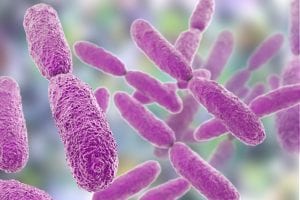 Gram-Negative Bacteria in Indoor Environments
Gram-Negative Bacteria in Indoor Environments
The designation of a bacterium as “Gram-negative” is based on the reaction of the organism in the Gram stain test. This test quickly classifies bacteria into two major groups, Gram-positive and Gram-negative, based on the structure of their cell walls.
The cell walls of Gram-negative bacteria consist of an outer membrane and a thin peptidoglycan layer. This cell wall cannot retain the crystal violet (blue/purple) stain, but is stained with the counterstain, safranin (red). Gram-positive organisms, on the other hand, possess a thick peptidoglycan layer. This difference in cell wall structure translates into differences in how these two groups of organisms behave in the environment. Gram-negative organisms tend to be more vulnerable to drying due to their thinner cell wall, but less susceptible to cleaning agents as they possess an outer membrane that acts as a barrier to the uptake of sanitizers and disinfectants.
The concentrations of Gram-negative bacteria in indoor environments depend on a number of factors. These include the ventilation rate of the space, the presence of animals, and the presence of standing water or sewage.
In ISO-classified areas, the main source of Gram-negative microbial contamination is sink drains, refrigerator condensate pans, or other sources of standing water.
Environmental Testing
At U.S. Micro Solutions, our microbiology laboratory is a licensed, accredited source for thorough and accurate environmental testing, including USP 797, Legionella, indoor air quality, healthcare & medical device, water analysis, and identification of specific pathogens. Visit our Laboratory Services page to learn more.
Give us a call at 724-853-4047 or contact us online via our Contact page.

